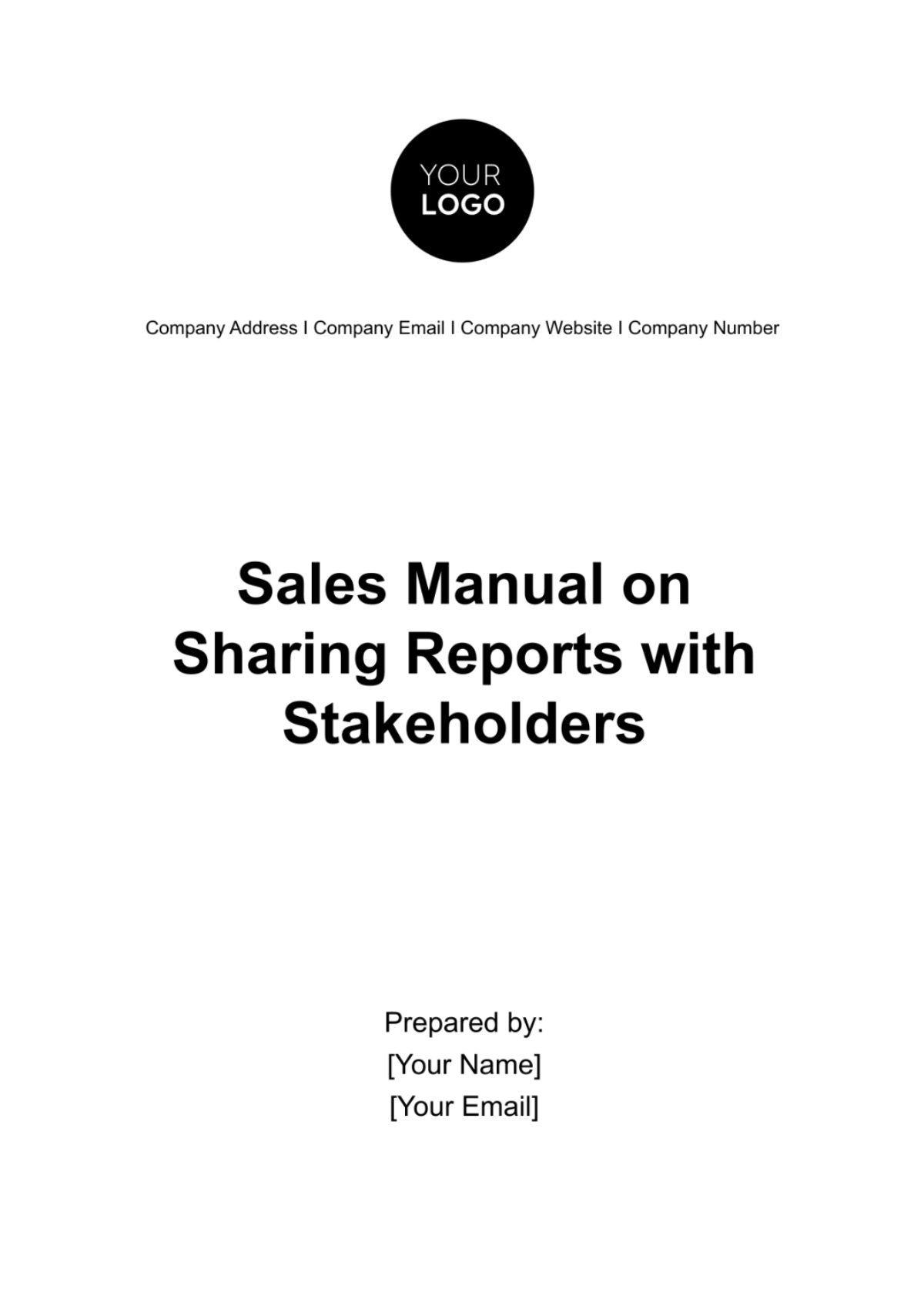Marketing Retail Collaboration Manual for Product Display
1. Introduction
Welcome to the Marketing Retailer Collaboration Manual for Product Display, tailored specifically for our IT company. In today's competitive marketplace, the success of our products not only relies on their quality and innovation but also on how effectively they are presented and marketed to our target audience. This manual serves as a comprehensive guide to establishing and nurturing collaborative relationships with retail partners to optimize the visibility and sales of our products.
Purpose of the Manual
The primary purpose of this manual is to provide a structured framework for our teams to navigate the complex landscape of retailer collaboration in the context of product display. By offering clear, actionable guidance, we aim to:
Facilitate Effective Collaboration: This manual equips our teams with the knowledge and tools needed to initiate and maintain productive partnerships with retailers. It provides a step-by-step approach to building these relationships from the ground up.
Enhance Product Visibility: Collaborating with retailers allows us to showcase our products to a wider audience. We will explore strategies to create compelling in-store displays that captivate potential customers and encourage product adoption.
Increase Sales and Market Share: Effective retailer collaboration can lead to increased sales and market share. We will discuss strategies to leverage these partnerships for maximum financial impact.
Optimize Resource Allocation: By understanding the processes, costs, and benefits associated with retail collaborations, we can make informed decisions about budget allocation and resource management.
Establish a Framework for Continuous Improvement: We believe in the power of learning from both successes and challenges. This manual encourages a culture of continuous improvement by offering insights from real-world case studies and best practices.
Benefits of Retailer Collaboration
Collaborating with retailers is not merely a transactional relationship but a strategic move that offers a multitude of benefits. Some key advantages of retailer collaboration include:
Expanded Market Reach: Partnering with established retailers allows us to access their existing customer base, increasing our product's exposure to a wider and more diverse audience.
Enhanced Credibility: Retailers are trusted by consumers. Our products, when displayed alongside reputable brands, gain credibility and are perceived as reliable and high-quality.
Increased Product Visibility: Effective in-store displays, a result of collaboration, can attract and engage customers, making our products more likely to be noticed and considered.
Cost-Effective Marketing: Collaborative marketing efforts can be more cost-effective than standalone advertising campaigns. Retailers often share the promotional costs, reducing our overall marketing expenditure.
Data and Feedback: Retail collaborations provide valuable insights into customer preferences and market trends. Feedback from retailers and their customers can inform product development and marketing strategies.
Competitive Edge: In an increasingly competitive IT market, a successful collaboration with retailers can give us a competitive edge, enabling us to stand out from competitors.
Sales Growth: Ultimately, effective retailer collaboration can lead to increased sales and revenue growth, driving the overall success of our company.
In the following sections of this manual, we will delve into the specifics of how to initiate, nurture, and manage collaborative relationships with retailers, ensuring that we maximize these benefits for our IT company's products.
2. Understanding Your Product
To effectively collaborate with retailers and promote our IT company's products, it's imperative to have a deep understanding of the products we offer. This section will provide detailed insights into our product portfolio, emphasizing key features, benefits, and unique selling points (USPs). Armed with this knowledge, we can effectively communicate the value of our products to both potential retail partners and end customers.
Product Portfolio
Product Categories: Begin by categorizing our products into distinct groups or categories. This could include hardware, software solutions, accessories, and services. Each category may have its unique characteristics and target audiences.
Product Descriptions: Provide concise yet comprehensive descriptions of each product within the categories. Include essential details such as product names, models, specifications, and compatibility.
Product Lifecycle: Describe where each product stands in its lifecycle. Are they new releases, established products, or about to be phased out? Understanding this will help in planning collaborations and managing inventory effectively.
Market Positioning: Analyze how each product fits within the broader market. Is it a premium offering, a budget-friendly option, or somewhere in between? Knowing the competitive landscape will inform pricing and marketing strategies.
Key Features and Benefits
Highlighting the key features and benefits of our products is essential in conveying their value proposition to retailers and, ultimately, to end consumers.
Key Features: For each product, list its standout features that differentiate it from competitors. These could include technical specifications, performance metrics, design elements, or proprietary technologies. Be as specific as possible.
Benefits to End Users: Translate product features into tangible benefits for end users. How does each feature enhance the user's experience or solve a problem? For example, if a laptop has a long battery life, explain how this benefits users by allowing them to work longer without recharging.
Solving Pain Points: Identify the pain points or challenges that our products address. Whether it's increasing productivity, improving security, or enhancing entertainment experiences, clearly articulate how our products provide solutions.
USPs (Unique Selling Points): What sets our products apart? Define the unique aspects that make our products superior or more desirable compared to similar offerings in the market. USPs can be technical innovations, exceptional design, or exceptional customer support.
Use Cases: Provide real-world scenarios or use cases where our products shine. Explain how they can be applied in various settings or industries, making them versatile and valuable to a wide range of customers.
Customer Testimonials: If available, incorporate customer testimonials or reviews that highlight positive experiences and outcomes with our products. These testimonials serve as social proof of our product's value.
Visuals and Multimedia: Use images, videos, and infographics to illustrate key features and benefits. Visual aids can make complex technical information more digestible and engaging.
3. Identifying Potential Retailers
To establish successful collaborations with retailers for product display, it's essential to carefully identify and select the right partners. This section outlines the criteria for retailer selection and the steps involved in conducting research and market analysis to find potential collaborators.
Criteria for Retailer Selection
Relevance to Target Audience: Retailers should cater to a customer base that aligns with our target audience. Ensure that their customer demographics, preferences, and needs match the profile of customers who would be interested in our IT products.
Market Presence: Consider retailers with a strong and established market presence. Well-known retailers often have a larger customer base and higher foot traffic, increasing the potential visibility of our products.
Geographical Reach: Assess the geographical reach of potential retail partners. Depending on our product distribution strategy, we may need retailers with a local, regional, national, or international presence.
Complementary Products: Evaluate whether the retailer's existing product offerings complement our products. For instance, if we offer high-end laptops, collaborating with a retailer that specializes in premium electronics could be advantageous.
Brand Alignment: Ensure that the retailer's brand values and reputation align with our company's values and image. A retailer with a strong reputation for quality and customer service can enhance the perceived value of our products.
Sales Expertise: Consider the retailer's sales team's expertise and product knowledge. Retailers with well-trained staff are more likely to effectively promote and sell our products.
Store Footprint: Assess the size and number of retail locations. Larger retail chains may provide more extensive coverage, but smaller, specialized stores may offer a unique opportunity to target specific customer segments.
Competitive Landscape: Analyze the retailer's competitive landscape. Are they already partnering with our competitors, or are they open to exclusive partnerships? Understanding this can help us stand out in the market.
Financial Stability: Evaluate the financial stability of potential retail partners to ensure they can meet their commitments and support our products effectively.
4. Building Collaborative Relationship
Effective collaboration with retailers is built on establishing strong, mutually beneficial relationships. In this section, we'll delve into the critical steps of initiating and nurturing these relationships, including making the initial contact and introduction and developing a compelling value proposition.
Initial Contact and Introduction
Identify Key Contacts: Research and identify the key decision-makers or contacts within the retail organization. These may include senior management, category managers, or purchasing managers.
Professional Outreach: Craft a professional and personalized outreach message. This could be through email, phone calls, or in-person meetings. Clearly communicate your intention to explore collaboration opportunities.
Introduction Meeting: Arrange an introductory meeting or presentation to introduce your company, products, and the potential benefits of collaboration. Highlight your commitment to mutual success.
Networking and Industry Events: Attend industry events, conferences, and trade shows where you can meet potential retail partners in person. These events provide valuable networking opportunities.
Leverage Existing Connections: If you have existing business relationships or partnerships, leverage them to secure introductions or recommendations to potential retail partners.
Clear Communication: During the initial contact and introduction, be clear about your objectives, the benefits of collaboration, and what you bring to the table. Address any questions or concerns from the retailer.
5. In-store Displays
Effective in-store displays are crucial for capturing the attention of shoppers and driving sales. In this section, we will explore the design principles for product displays and the importance of retail space assessment to ensure our products are showcased optimally.
Design Principles for Product Displays
Visual Hierarchy: Establish a clear visual hierarchy that guides the shopper's attention. Place the most important and eye-catching products at eye level or in the center of the display.
Consistency with Branding: Ensure that the display aligns with our brand's visual identity. Use consistent colors, fonts, and imagery to reinforce brand recognition.
Simplicity: Avoid clutter and complexity in your displays. Focus on highlighting a few key products or features rather than overwhelming the shopper with too much information.
Storytelling: Create a narrative around the products on display. Explain how they can solve problems or enhance the shopper's life. Use signage or digital displays to tell this story effectively.
Lighting: Proper lighting can make a significant difference in how products are perceived. Use lighting to accentuate key features and create a visually appealing atmosphere.
Retail Space Assessment
Before designing in-store displays, it's essential to assess the retail space to make informed decisions about how to showcase our products effectively.
Store Layout: Understand the layout of the retail space, including aisles, entrances, and high-traffic areas. Identify prime locations for displays.
Foot Traffic Patterns: Analyze the flow of shoppers within the store. Place displays in areas with high foot traffic to maximize visibility.
Competitor Displays: Observe how competitors are displaying their products. Identify opportunities to stand out or differentiate our displays.
Available Fixtures: Determine the types of fixtures available for displays, such as shelves, racks, or standalone kiosks. Design displays that fit seamlessly into the existing store infrastructure.
Space Constraints: Take into account any space constraints, including available floor space and vertical space. Ensure that displays do not obstruct aisles or create congestion.
6. Marketing Support
To ensure the success of our product displays in retail stores, it's essential to offer comprehensive marketing support to our retail partners. In this section, we will explore the creation of co-branded marketing materials and the importance of providing training for retail staff.
Co-Branded Marketing Materials
Collaborative Branding: Develop co-branded marketing materials that prominently feature both our company's branding and that of the retail partner. This reinforces the collaboration and boosts credibility.
Point of Sale Materials: Create eye-catching point-of-sale materials, such as posters, banners, and countertop displays, that highlight our products and promotions. These materials should be consistent with our overall marketing strategy.
Product Brochures: Design product brochures or catalogs that provide detailed information about our products. Include high-quality images, specifications, key features, and benefits. Make these available for customers to take home.
Interactive Displays: Consider incorporating digital displays or touchscreen kiosks that allow customers to explore product features, watch demos, or access additional information. These can be especially effective for complex products.
In-Store Signage: Create clear and informative in-store signage that guides customers to the product display, provides product highlights, and communicates pricing and promotions effectively.
7. Monitoring and Evaluation
Effective monitoring and evaluation are essential components of a successful retailer collaboration strategy. This section discusses the importance of monitoring and evaluation, outlines key performance indicators (KPIs), and provides guidance on how to implement these processes.
Importance of Monitoring and Evaluation
Performance Assessment: Monitoring and evaluation help assess the performance of the collaboration initiative, providing insights into what is working well and where improvements are needed.
Decision-Making: Data-driven insights from monitoring and evaluation inform strategic decisions, allowing for the adjustment of tactics and strategies as necessary.
Accountability: Tracking progress and performance holds both our company and retail partners accountable for meeting agreed-upon goals and objectives.
Continuous Improvement: Regular evaluation fosters a culture of continuous improvement, enabling us to refine strategies, optimize resources, and enhance the overall collaboration.
Efficiency: By identifying areas of inefficiency or underperformance, we can allocate resources more effectively and maximize the return on investment (ROI) of the collaboration.
Key Performance Indicators (KPIs)
Selecting the right KPIs is critical for effective monitoring and evaluation. Below are some key performance indicators relevant to retailer collaboration for product display:
Sales Growth: Monitor the increase in sales revenue attributed to the collaboration. Compare this growth to previous periods or baseline figures.
Market Share: Assess the percentage of the market share acquired as a result of the collaboration, particularly in comparison to competitors.
Customer Traffic: Track the foot traffic to retail locations where our products are displayed. Analyze the correlation between display effectiveness and increased store visits.
Conversion Rate: Measure the rate at which store visitors who interact with our displays make a purchase. This helps assess the impact of displays on purchase decisions.
Average Transaction Value: Calculate the average amount spent by customers who purchase our products in-store. Identify whether our products contribute to larger transactions.
8. Conclusion
In conclusion, retailer collaboration is a strategic imperative for our IT company, offering a multitude of benefits that extend beyond the realms of individual product sales. As we've explored in this manual, collaboration with retailers plays a pivotal role in enhancing our market presence, boosting product visibility, and driving sales growth. It fosters mutually beneficial partnerships that contribute to the success of both our company and our retail partners.
Throughout this manual, we've outlined comprehensive steps to initiate and nurture these collaborations, from identifying potential retail partners to creating compelling in-store displays, providing marketing support, and monitoring and evaluating our efforts. These processes are designed to maximize the value of our collaborations and optimize the presentation of our IT products to the target audience.
Benefits of Retailer Collaboration
Expanded Market Reach: Collaborating with retailers allows us to access their existing customer base, increasing our product's exposure to a wider and more diverse audience.
Enhanced Credibility: Retailers are trusted by consumers. Our products, when displayed alongside reputable brands, gain credibility and are perceived as reliable and high-quality.
Increased Product Visibility: Effective in-store displays, a result of collaboration, can attract and engage customers, making our products more likely to be noticed and considered.
Cost-Effective Marketing: Collaborative marketing efforts can be more cost-effective than standalone advertising campaigns. Retailers often share the promotional costs, reducing our overall marketing expenditure.
Data and Feedback: Retail collaborations provide valuable insights into customer preferences and market trends. Feedback from retailers and their customers can inform product development and marketing strategies.

















































